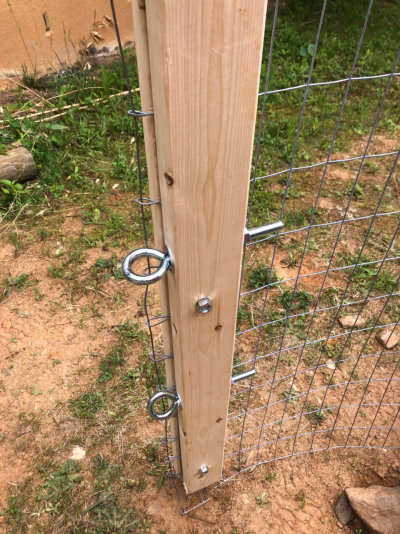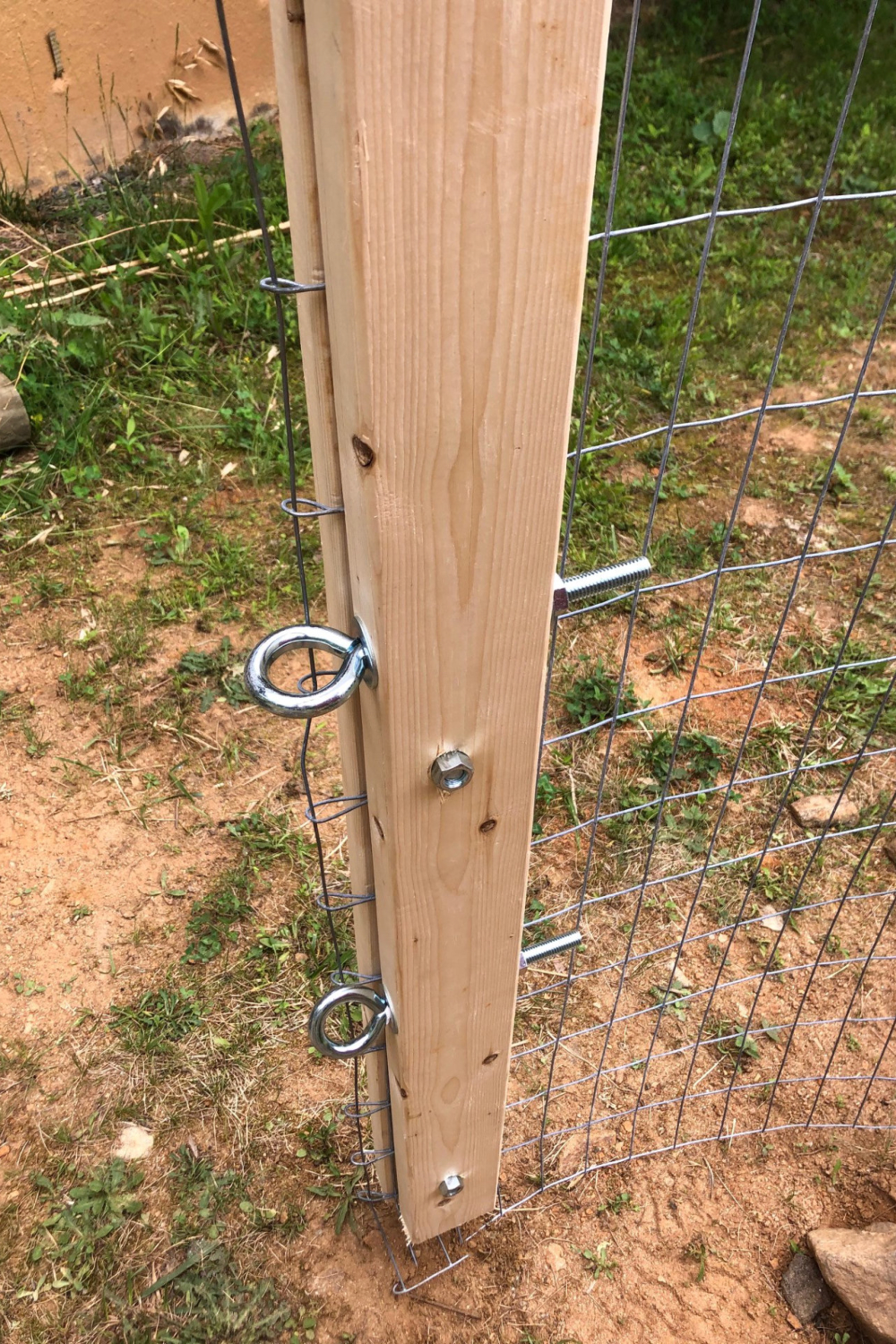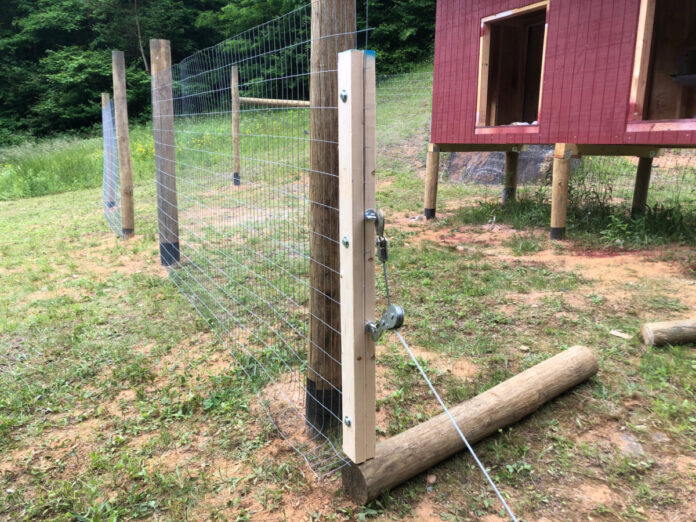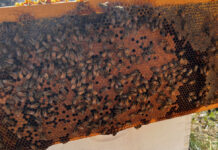After spending a good part of the day installing our fence, I feel like I need a horse and a cowboy hat.
There are seven sections of fence to pull. First, to surround the garden and the beehives. Then I will subdivide the big rectangular area to create a chicken run around the chicken coop. I’ve pulled three of the seven sections and I have at least another day’s worth of work before we even get to the electric fence. But it’s going faster as I gain experience. The biggest challenge is pulling fence in the area where the ground is uneven, and since our lot slopes, there are multiple areas where it is uneven.
Right now, I am pulling a 5-foot-high 2” x 4” welded wire fence. Around the chicken coop we are adding half-inch welded wire with a foot or two lying on the ground to prevent predators from digging under the fence. After I finish installing the welded wire fence, I’ll pull a multiple single-strand wires for the electric fence. I will cover the electric fence design and install in a future post.
Off to a Rough Start
Before installing the fence, I decide to mow down the meadow that has grown up where the fence will go. Now I have an inexpensive lawn and garden tractor that was not built for the steep terrain I have. It needs chains and weights, and I haven’t gotten there yet. So I am mowing with caution. Suddenly, the steering doesn’t respond and I look down to see what’s the problem. My right front tire has come off the rim.
I don’t know how this happened. Did I steer too sharply? Was the tire low in pressure? In any case, steering was no longer an option. I had to hop off, lift the front end of the garden tractor and reposition it in the direction I wanted to go. Then I could push it slowly until I reached a level spot.
I jacked the right side up, used a set of tools meant to change bicycle tires, and got the tire repositioned on the rip. Crossing my fingers, I hooked up the air compressor and inflated the tire. Dang, if that’s all it took.
I finished mowing and then did the front yard as well. Then I used the weed whacker. Only then were did I get to fence pulling.
Using a Homemade Fence Puller
The basic concept of fence stretching pulling is that you unroll the fence along the posts where you want it to run. Then you cut the fence, leaving yourself a little extra. (When I started, I was giving myself a couple feet extra. As I progressed, this dropped to 8 or 10 inches.) I then sat the fence up, used fence staples to attach one end to its pole, and used the fence puller to stretch it taught. Once it is tight, I went down the row, hammering in five fence staples to each post.
There are many methods and different tools to stretch the fence, and some of those vary by type of fence. For example, stretching a chain link or barbed wire fence would be different. I build a fence stretcher by cutting a 2×4 in half, lining them up with each other and drilling three holes through it. I then put the fence in between the 2x4s and bolt them together. Then I attach my come along to the two large eye bolts that go through one of the 2x4s. I anchor this to a pole, my truck hitch or the lawn and garden tractor. Then I crank on the come-along to tighten the fence.

As you crank on the come-along and tighten the fence, it’s a good idea to walk along the stretch and make sure it’s not caught or binding anywhere. You also want to keep the fence straight and as level as possible. Getting it level can be a challenge if the terrain goes up or down. You may have come by later and add some extra fencing materials in areas where the land drops away or there is a gully.
How Tight is Tight Enough?
Knowing when the fence is tight enough is a judgment call; just don’t pull It so tight that something snaps or breaks. When the tractor, which was parked and had its brakes set, moved, I figured we were tight enough. You want the fence to be as tight as a guitar string and not sag or sway.
As I said before, the more of these I did, the better I got at it. My wife, who was providing a second pair of hands at time, also got the hang of it quickly. By the end of the day, we were humming along.
I was using 1-1/2-inch barbed staples, which seemed huge. About one out of every five or six staples would not go in straight, but I just drove them in anyhow and banged them flat against the wood post. I keep reminding myself that I am not trying to keep goats, sheep or cattle in. Our fence is intended to keep small predators away from the raised beds and bee hives. The electric lines, which will go outside the fence, will be to keep away the larger predators, up to and including bear.
Prepper News Update
It appears Joe Manchin, the Democrat Senator from West Virginia, is standing up the socialists in his party and will vote against the miss-named “For the People” voting act and will not allow the senate to weaken or eliminate the filibuster. This is good news for all Americans.
U.S. District Judge Roger Benitez declared California’s ban on certain assault weapons unconstitutional, leading to an outpouring of outrage from Democratic politicians, gun control advocates, and the media. The latter tracked down relatives of people who had been killed by assault weapons to get quotes and acted in an alarmist fashion. The LA Times actually had a more balanced story than most. While the state is expected to appeal, this case is good news for Californians and anyone who opposes the Biden Administration’s gun control plans.








